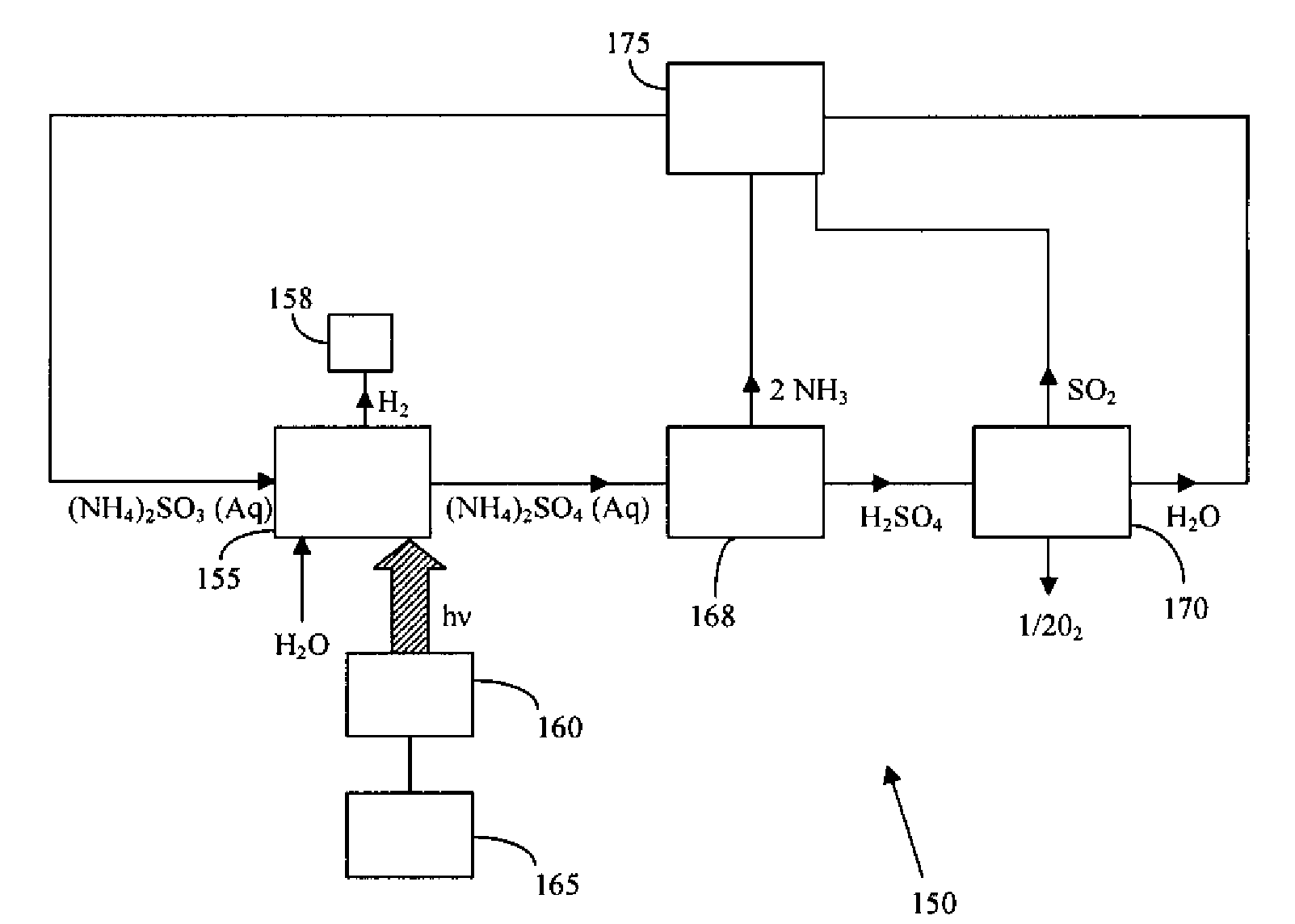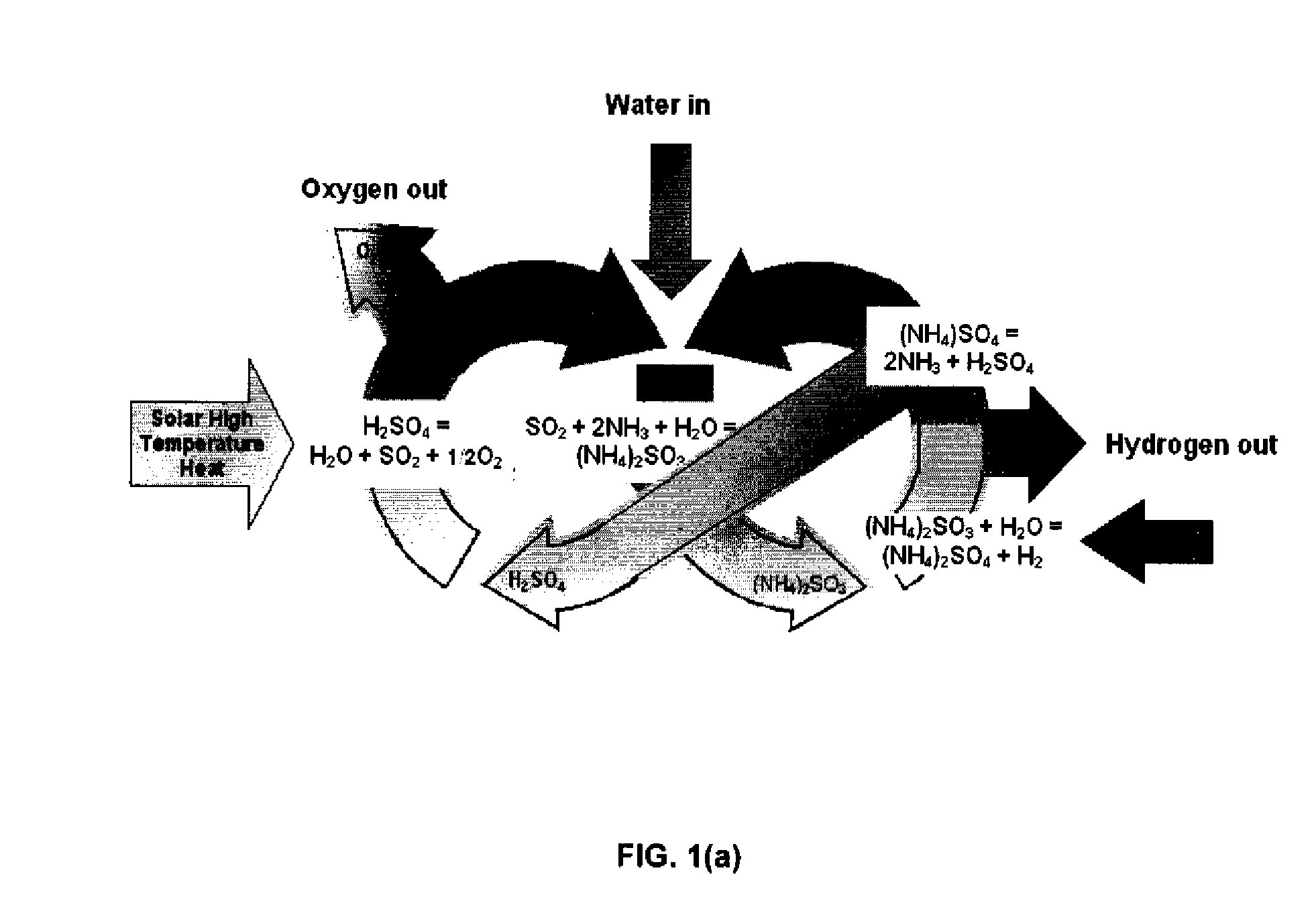Thermochemical Cycle for Production of Hydrogen and/or Oxygen Via Water Splitting Processes
a technology of hydrogen and/or oxygen and water splitting, which is applied in the direction of liquid-gas reaction of thin-film type, gas-gas reaction process, hydrogen separation using liquid contact, etc., can solve the problems of poor solar uv availability, e>1.23 v electrolysis, and the realization of the future h/sub>economy
- Summary
- Abstract
- Description
- Claims
- Application Information
AI Technical Summary
Benefits of technology
Problems solved by technology
Method used
Image
Examples
examples
[0051]It should be understood that the Examples described below are provided for illustrative purposes only and do not in any way define the scope of the invention.
[0052]In order to verify the photochemical hydrogen generation step shown in Reaction (7), a series of experiments involving visible-light photocatalytic production of H2 from aqueous ammonium sulfite solutions were carried out. Ammonium sulfite (Aldrich Chemicals) was used without further purification. A 250 mL and 0.25 M (or 0.50 M) aqueous slurry solution of ammonium sulfite and photocatalysts comprising 0.50 g of cadmium sulfide (CdS) powder (Alfa Aesar) and 2.0 mL poly platinum (as a photocatalyst) which was poured into a quartz photoreactor. The volume of hydrogen produced from the solution was measured by water displacement method. A Gas Chromatograph (GC) equipped with a thermal conductivity detector and argon carrier gas was used to determine the purity of product hydrogen. A solar simulator was employed equipped...
PUM
 Login to View More
Login to View More Abstract
Description
Claims
Application Information
 Login to View More
Login to View More - R&D
- Intellectual Property
- Life Sciences
- Materials
- Tech Scout
- Unparalleled Data Quality
- Higher Quality Content
- 60% Fewer Hallucinations
Browse by: Latest US Patents, China's latest patents, Technical Efficacy Thesaurus, Application Domain, Technology Topic, Popular Technical Reports.
© 2025 PatSnap. All rights reserved.Legal|Privacy policy|Modern Slavery Act Transparency Statement|Sitemap|About US| Contact US: help@patsnap.com



